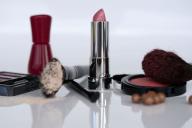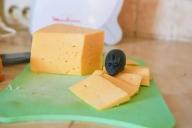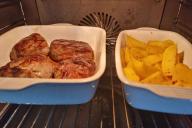You are proud of your new kitchen: fashionable facades, shiny appliances, stylish apron.
But why do the guests, instead of being delighted, nervously fidget on their stools and hastily finish drinking coffee?
You may have made one of the fatal mistakes that turn the kitchen into a zone of discomfort. Designers call them “prohibited techniques” — solutions that look aesthetically pleasing but make the space uncomfortable and sometimes dangerous.

Mistake #1: A bar counter instead of a dining table.
You've seen this idea in every other magazine: a compact counter with high stools saves space and adds "European chic." But in practice, guests sit for hours on unstable seats without a back, swinging their legs in the air. This is not only uncomfortable, but also harmful to the spine. Ergonomic studies show that sitting at a height of more than 65 cm without support increases the load on the lower back by 40%. The solution? If space allows, put a classic 75 cm high table with chairs. For small kitchens, a fold-out transformable table by the window or an island with pull-out seats is suitable.
Mistake #2: Open shelves above the stove.
Yes, they look atmospheric - jars with spices, beautiful plates, wicker baskets. But after a week, grease, dust and steam from cooking settle on these shelves. The oil film mixes with dust, turning the decor into a sticky mass. And if there are wooden items among the dishes, they absorb odors and deform from moisture. An alternative is closed cabinets to the ceiling with a hood built into the lower part. This way, steam and splashes will be immediately captured, and the facades will protect the contents from contamination.
Mistake #3: Glossy apron and furniture.
Mirror gloss visually expands the space, but in the kitchen it becomes a curse. Every fingerprint, drop of water or sauce stain is visible as if under a magnifying glass. Even worse, gloss reflects light, creating glare that tires the eyes. Glass aprons are especially dangerous: they heat up from the stove and can crack from temperature changes. Choose matte or satin surfaces. Porcelain stoneware with a concrete or stone texture is suitable for the apron - it will hide dirt and is not afraid of high humidity.
Mistake #4: Built-in appliances next to the stove.
A refrigerator, dishwasher or oven placed close to the hob is a time bomb. The heat from the stove overheats the equipment, reducing its service life by 2-3 times. For example, a refrigerator operating at a temperature above +30°C uses 50% more electricity. According to safety standards, there must be at least 15 cm of free space between the stove and any built-in equipment. If the kitchen is small, install a heat-resistant partition made of stainless steel or ceramics.
Mistake #5: Black plumbing and dark floor tiles.
Trendy black faucets and sinks look impressive, but require perfectionism. Every drop of water leaves a white limescale film, and soap stains are visible even in dim light. The same with a dark floor: not only dirt is visible on it, but also the smallest crumbs, creating the impression of disorder. Choose plumbing in a gray or graphite shade - traces are less noticeable on them. Medium-tone tiles with a small pattern (for example, under marble chips) or high-quality linoleum with a wood texture are ideal for the floor.
How to fix errors without repair?
If you can't remodel your kitchen, there are some life hacks. Stick some anti-glare film on the glossy apron. Place poufs with backs next to the bar counter - they will compensate for the inconvenience of stools. Close open shelves with glass sliding doors. And to protect the appliances from overheating, use heat-insulating tape along the contour of the stove.
The main secret of a cozy kitchen is not blindly following trends, but well-thought-out ergonomics. Take a test: spend an evening in your kitchen preparing dinner. If you tripped over a drawer three times, burned yourself on the stove handle, and spent 10 minutes looking for a knife, it’s time to change something. The kitchen should work like a Swiss watch, not an obstacle course. And remember: even small edits will make the space more comfortable, and guests will stop looking at their watches, waiting for a reason to leave.








